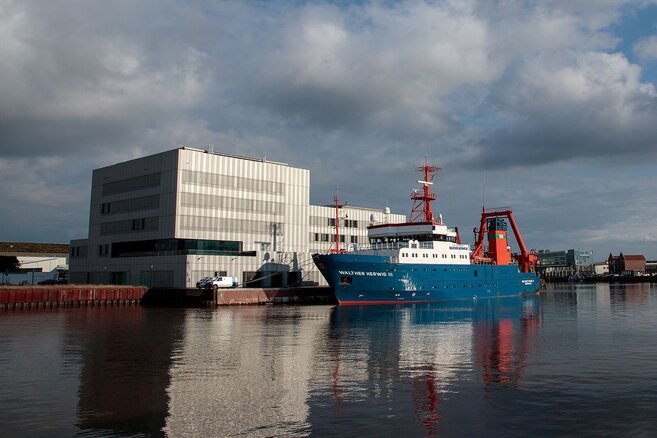
© Kay Panten

Institut für
SF Seefischerei
Dr. Sabrina Duncan

Thünen-Institut für Seefischerei
Herwigstraße 3127572 Bremerhaven
- Telefon
- +49 471 94460 385
- sabrina.duncan@thuenen.de
Forschungsinteressen
- Ökologie und Vielfalt der mesopelagischen Fische im Atlantik
- Struktur des pelagischen Nahrungsnetzes im Südostatlantik
- Auswirkungen von Umweltfaktoren auf Fischgemeinschaften
- Östlicher Grenzstrom – Auftriebssysteme
- Fischgemeinschaften in Sauerstoffminimumzonen
Aufgaben
- Untersuchung der Rolle von mesopelagischen Fischen im marinen Nahrungsnetz des Benguela-Auftriebssystems
- Bestimmung der Umweltfaktoren für mesopelagische Fische im Kanaren- und Benguelastrom
Projekte
Beteiligt an
laufende Projekte
abgeschlossene Projekte
Wissenschaftliche Ausbildung und Werdegang
- Seit 2023: Post-Doc am Thünen-Institut für Seefischerei im Projekt B-USEFUL
- 2018-2023: Doktorandin am Thünen-Institut für Seefischerei und an der Universität Bremen. Betreuer Dr. Heino Fock und Prof. Wilhelm Hagen. Dissertationstitel: "Assemblage-Struktur und Trophodynamik von mesopelagischen Fischen im Benguela- und Kanarenstrom-Auftriebssystem"
- 2015-2017: Master of Science in Ökologie, Evolution und Systematik an der Ludwig-Maximilians-Universität (LMU), München, Deutschland. Thesis title: "You are what you eat: Wie Nährstoffe und Zooplanktonzusammensetzung in unterschiedlichen Seen die Ernährung und Größe von Seefelchen (Coregonus sp.) beeinflussen"
- 2014-2015: Lehrkraft für Umwelterziehung und Ökologie/Reiseleiterin - Washington und Georgia, USA und Heredia, Costa Rica
- 2013: Forschungsassistent - Tortuguero, Costa Rica
- 2008-2012: Bachelor of Science mit Hauptfach Biologie und Nebenfach Spanisch an der University of Puget Sound in Tacoma, Washington, USA
Publikationen
- Publikationen, referiert
- Publikationen, nicht referiert
- Dömel JS, Macher TH, Dietz L, Duncan S, Mayer C, Rozenberg A, Wolcott K, Leese F, Melzer RR (2019). Combining morphological and genomic evidence to resolve species diversity and study speciation processes of the Pallenopsis patagonica (Pycnogonida) species complex. Front Zool 6:16- 36.
Nach oben

